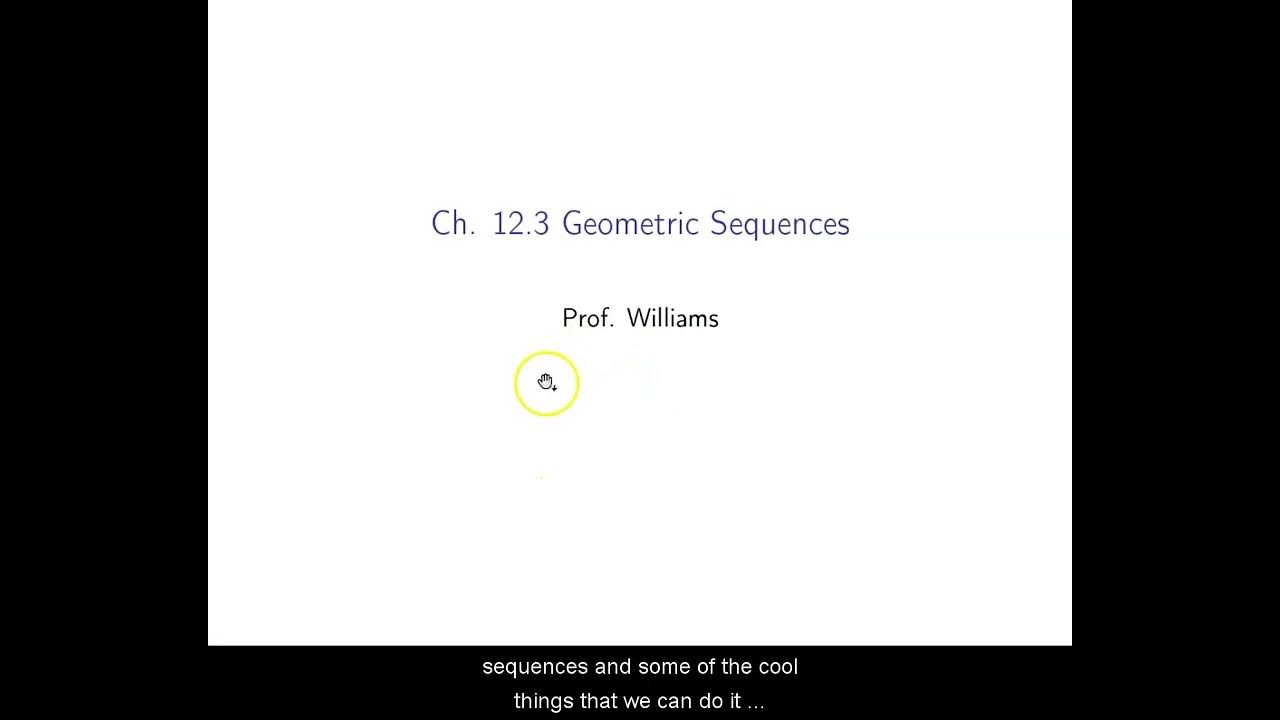Partial sums: formula for nth term from partial sum | Series | AP Calculus BC | Khan Academy
TLDRThe video script explains how to derive the formula for the nth term of an infinite series given the formula for the sum of the first n terms. It uses a visual approach to illustrate the process of finding the nth term by subtracting the sum of the first n-1 terms from the sum of the first n terms. The formula for the nth term, a_n, is simplified by combining fractions and is presented for n greater than one, highlighting the mathematical steps involved in the simplification process.
Takeaways
- 📏 The nth partial sum of a series is considered, summing from one to infinity.
- 🧮 The given formula represents the sum of the first n terms.
- 📝 The task is to write a rule for the actual nth term.
- 📊 Visualization involves summing terms from a_1 to a_n.
- 🔢 The entire sum is denoted as S_n and equals (n + 1) / (n + 10).
- ➖ To find a_n, subtract the sum of the first n - 1 terms from S_n.
- 🔍 S_(n-1) is calculated as n / (n + 9).
- ➡️ a_n is derived by subtracting S_(n-1) from S_n.
- 🧩 The resulting formula for a_n involves simplifying the fractions.
- 📉 For n greater than 1, the simplified rule for a_n is obtained.
Q & A
What is the purpose of the exercise described in the script?
-The purpose of the exercise is to determine the formula for the Nth term (a_sub_n) of an infinite series, given the formula for the sum of the first n terms (S_sub_n).
What is the formula for the sum of the first n terms (S_sub_n) in the series?
-The formula for S_sub_n is given by (n + 1) / (n + 10).
How is the visualization in the script used to help understand the series?
-The visualization shows the addition of terms from a_sub_1 to a_sub_n, which helps in understanding how the sum of the series is built up and how to isolate the Nth term.
What is the formula for the sum of the first n-1 terms (S_sub_n-1)?
-The formula for S_sub_n-1 is given by (n / (n + 9)).
How do you find the Nth term (a_sub_n) of the series?
-You find a_sub_n by subtracting the sum of the first n-1 terms (S_sub_n-1) from the sum of the first n terms (S_sub_n).
What is the simplified formula for a_sub_n when n is greater than one?
-The simplified formula for a_sub_n when n > 1 is (n + 9) / ((n + 10) * (n + 9)).
What happens when n equals one in the series?
-When n equals one, a_sub_1 is equal to S_sub_1, which is 2/11.
How does the script simplify the fraction (n + 1) / (n + 10) - n / (n + 9)?
-The script simplifies the fraction by finding a common denominator and subtracting the numerators, resulting in (n + 9) / ((n + 10) * (n + 9)).
What is the common denominator used in the script to simplify the fraction?
-The common denominator used is (n + 10) * (n + 9).
How does the script ensure the formula for a_sub_n is accurate for all n greater than one?
-The script ensures accuracy by deriving the formula through a step-by-step process of subtraction and simplification, starting from the known formulas for S_sub_n and S_sub_n-1.
Outlines
📚 Understanding Series and Summation
This paragraph introduces the concept of finding the Nth term of an infinite series by visualizing the summation process. It explains how to derive the formula for the Nth term (a sub n) by using the given formula for the sum of the first n terms (s sub n). The narrator creates a visual representation to illustrate the process of summing from one to infinity and uses it to deduce the rule for a sub n by subtracting the sum of the first n-1 terms (s sub n-1) from s sub n. The explanation includes the simplification of fractions and the final expression for a sub n for n greater than one.
Mindmap
Keywords
💡Nth partial sum
💡Series
💡a_sub_n
💡Sum of the first n terms
💡Visualization
💡Common denominator
💡Subtract out
💡Fraction simplification
💡n greater than one
💡Drum roll
Highlights
Introduction to the concept of nth partial sum of a series.
Explanation of the formula for the sum of the first n terms.
Visualization created to understand the series summation.
Expression of the nth partial sum as s sub n.
Equation s sub n equals n plus one over n plus 10.
Method to find a sub n by subtracting the sum of the first n-1 terms.
Expression for s sub n minus one as n over n plus nine.
Derivation of a sub n by subtracting s sub n minus one from s sub n.
Simplification of the expression for a sub n for n greater than one.
Introduction of the common denominator for fraction addition.
Multiplication of numerator and denominator by n plus nine.
Subtraction of fractions to isolate a sub n.
Simplification of the numerator resulting in n squared plus 10 n.
Final expression for a sub n with the denominator as n plus nine times n plus ten.
Cancellation of terms in the numerator and denominator.
Final rule for a sub n expressed for n greater than one.
Transcripts
Browse More Related Video

Finite geometric series formula justification | High School Math | Khan Academy

Ch. 12.2 Arithmetic Sequences

Partial sums: term value from partial sum | Series | AP Calculus BC | Khan Academy

Geometric Series (Precalculus - College Algebra 72)

ILLUSTRATING SEQUENCES AND SERIES || PRECALCULUS

Ch. 12.3 Geometric Sequences
5.0 / 5 (0 votes)
Thanks for rating: